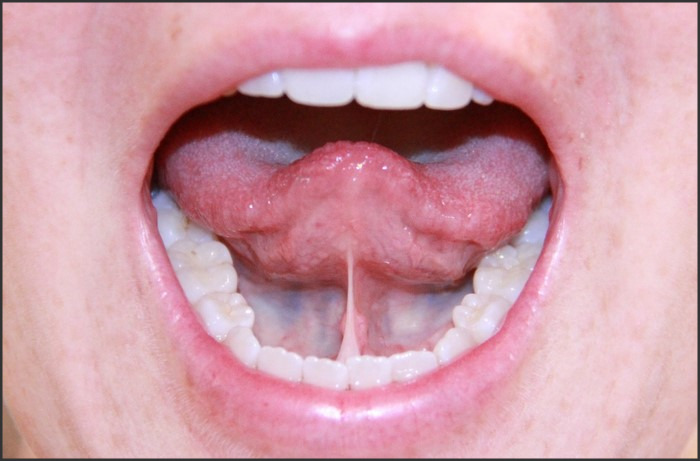
Tongue Tie vs Normal Tongue: Recognizing the Difference is an informative piece that aims to educate readers about the distinct characteristics between a tongue tie and a normal tongue. It delves into the anatomical differences, symptoms, potential complications, and treatment options for tongue tie, a condition that restricts the tongue’s range of motion due to an unusually short, thick, or tight band of tissue. This guide is designed to help individuals identify the condition and understand its implications, as compared to the functionality and appearance of a normal tongue.
Tongue Tie vs Normal Tonge: Recognizing the Difference – A Comprehensive Guide
Tongue tie, medically known as ankyloglossia, is a condition that is present at birth and affects the mobility of the tongue. It is characterized by an unusually short, thick, or tight band of tissue (lingual frenulum) tethering the bottom of the tongue’s tip to the floor of the mouth. On the other hand, a normal tongue has a sufficiently long and thin lingual frenulum, allowing for a wide range of motion. Recognizing the difference between a tongue tie and a normal tongue is crucial for early diagnosis and intervention, which can prevent potential speech, feeding, and dental problems.
In a normal tongue, the lingual frenulum should not interfere with the tongue’s movement. This allows for a full range of motion, including the ability to stick out the tongue past the lower lip, lift it to the upper teeth, move it side to side without straining, and easily touch the roof of the mouth. This flexibility is essential for various oral functions such as speaking, eating, swallowing, and oral hygiene.
In contrast, a tongue tie restricts the tongue’s movement due to the short, tight, or thick lingual frenulum. The most noticeable sign of a tongue tie is difficulty sticking out the tongue past the lower lip or moving it side to side. In severe cases, the tongue may appear heart-shaped when extended, due to the frenulum pulling its center. Infants with a tongue tie may have trouble breastfeeding, leading to poor weight gain and malnutrition. As they grow older, children may struggle with certain speech sounds, particularly those that require the tongue’s tip like “t”, “d”, “z”, “s”, “th”, and “l”. They may also experience challenges with oral hygiene, leading to dental issues such as cavities and gingivitis.
Diagnosing a tongue tie involves a physical examination of the mouth and tongue. Healthcare providers will assess the appearance and mobility of the tongue, and may also ask about symptoms related to feeding, speech, and oral hygiene. In some cases, a procedure called a frenotomy may be recommended. This involves cutting the frenulum to free the tongue for a wider range of motion. It’s a simple procedure that can often be done in a healthcare provider’s office with sterile scissors or a laser, and usually results in immediate improvement in tongue mobility.
However, not all tongue ties need intervention. Some may not cause any problems and may even loosen over time, allowing for improved tongue mobility. Therefore, the decision to treat a tongue tie should be based on whether it’s causing difficulties with feeding, speech, or oral hygiene.
In conclusion, recognizing the difference between a tongue tie and a normal tongue is essential for early diagnosis and intervention. While a normal tongue allows for a full range of motion, a tongue tie restricts this movement, potentially leading to feeding, speech, and dental issues. However, not all tongue ties require treatment, and the decision should be based on whether it’s causing problems. With the right knowledge and awareness, parents and caregivers can ensure that any tongue tie is identified and managed appropriately, promoting optimal oral health and development in their children.In conclusion, the difference between a tongue tie and a normal tongue lies in the lingual frenulum’s length and flexibility. A normal tongue has a lingual frenulum that allows for free movement, enabling various functions like speech, swallowing, and oral cleaning. On the other hand, a tongue tie, or ankyloglossia, is a condition where the lingual frenulum is unusually short or tight, restricting the tongue’s movement. This condition can lead to difficulties in speech, eating, and in some cases, social or psychological issues. Recognizing the difference between a tongue tie and a normal tongue is crucial for early intervention and treatment.